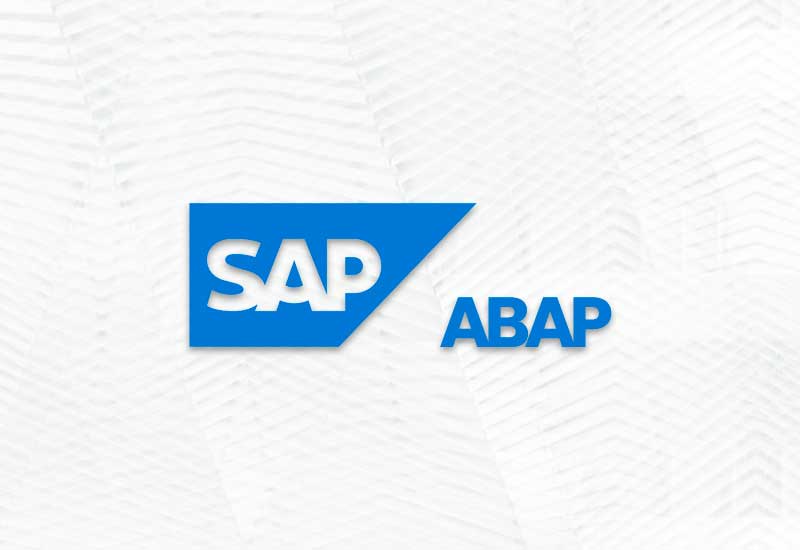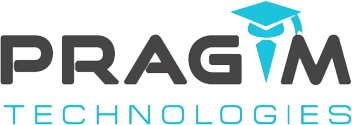SAP ABAP

SAP ABAP Course Content
INTRODUCTION TO SAP AND ABAP/4 LANGUAGE
- 1. Overall introduction to ERP
- 2. Introduction SAP R/3 architecture, Introduction to SAP ABAP/4
- 3. ABAP/4 editor (Focus on the functionalities of new ABAP editor)
- 4. Data types
- 5. Output statements
- 6. Writing small programs
- 7. Arithmetic operations
- 8. String operations
- 9. Control statements
- 10. Parameters
- 11. Open SQL –statements {insert, modify, delete, update}.
- 12. Simple reporting
- 13. Selection screens
- 14. Transaction code creation
- 15. Data Dictionary
- a. Tables
- b. Data element
- c. Domain
- d. Structures
- e. Search helps
- f. Views
- g. Type Groups
- h. Table maintenance generator and T-code creation
- i. Primary and foreign keys.
- j. Check and value tables.
REPORTING
- 1. Debugging techniques
- a. Breakpoint creation.
- b. Watch point creation.
- c. Emphasize on the usage of New Debugger.
- d. Modes of Debugging.
- e. System Debugging.
- f. Update Debugging.
- g. Background Debugging.
- h. Debugging Background Jobs.
- 2. Internal tables
- a. Declaration
- b. Type Casting
- c. Processing.
- d. Population.
- 3. Control Break Statements.
- 4. Modularization techniques.
- a. Includes.
- b. Subroutines.
- c. Function modules.
- d. Macros
- 5. Variants.
- 6. Conversion exits.
- 7. For all entries and joins {inner and left outer}.
- 8. Message class creation & message types and handling messages.
- 9. Events for classical reports.
- 10. Events for interactive reports.
- 11. Hide and hotspot.
- 12. Creating and handling buttons.
- 13. Menu painter.
ABAP OOPS
- 1. Fundamentals of OOPS.
- 2. Introduction to Local classes and methods
- 3. Importance of Public, Private and Protected sections.
- 4. Simple reporting using local classes and methods.
- 5. Global classes and interfaces.
- 6. Usage of global classes in the reports.
- 7. Class Based Exception Handling Mechanism - Exception Classes.
ALV
- 1. Introduction.
- 2. Types of ALV
- 3. Simple report to display simple ALV List using Function Modules
- 4. Simple report to display simple ALV grid using Function Modules.
- 5. Interactive ALV Reports.
- 6. Working with OOALV using classes (List, Grid).
DIALOG PROGRAMMING
- 1. Introduction to screen painter and dialog programming.
- 2. Flow logic
- a. PAI.
- b. PBO.
- c. POV.
- d. POH.
- 3. Screen designing.
- 4. Programming in object browser.
- 5. Field validations.
- 6. Creation of
- a. Table Controls.
- b. Tab Strips.
- 7. Dynamic Screen.
- a. Call Screen.
- b. Set Screen.
- c. Leave to Screen.
- d. Leave Screen.
- 8. Processing of list from transaction and vice versa.
- 9. Screen table and its fields.
- 10. Lock objects.
INTERFACE PROGRAMMING
- 1. Why Data Transfers
- 2. Introduction to BDC.
- 3. File Handling.
- a. Presentation server.
- b. Application server.
- 4. Recordings.
- 5. Methods in BDC.
- a. Call transaction.
- b. Session method.
- 6. Error Handling in Call Transaction.
- 7. Legacy System Migration Workbench (LSMW)
- 8. Different methods.
- 9. Steps to Create an LSMW Project.
- 10. Flat file creation.
- 11. Uploading data.
SAP Scripts
- 1. Introduction.
- 2. Layout Sets.
- 3. SAP Script Elements.
- 4. Modifying standard layout sets (by using subroutines).
- 5. Including logo.
- 6. SAPscript Control Commands.
- 7. SAPScripts Operations using different standard RSTX* Programs.
- 8. MultiLanguage Handling in SAPScripts.
SMARTFORMS
- 1. Working with smart forms.
- 2. Standard Texts.
- 3. Graphics management.
- 4. Writing print program and designing layouts.
- 5. Output type configuration to standard orders.
ADOBE FORMS / INTERACTIVE FORMS (PDF)
- 1. Introduction
MISCELLANEOUS TOPICS
- 1. SAP System Landscape.
- 2. Correction and Transport System (CTS).
- 3. Transport Organizer.
- 4. Workbench Request.
- 5. Task Creation.
- 6. Merging Requests
- 7. Release Requests.
- 8. SAP memory.
- a. SET/GET parameters.
- 9. ABAP memory.
- a. Imports/ Exports.
- 10. Logical Database and Handling Events (LDB).
- 11. Field symbols.
- 12. SD flow.
- 13. MM flow.
FUNCTION MODULES
- 1. Concepts of Function Group.
- 2. Different Types FMs.
- 3. Concepts of FM interface.
- 4. Concepts of Update Programs.
CROSS APPLICATION
- 1. Introduction to CA.
- 2. RFC destination.
- 3. Working with RFC function modules.
IDOCS
- 1. Concepts of IDOCS.
- 2. Structure of IDOCS and Types.
- 3. Creation of segments
- 4. Creation of IDOCS.
- 5. Using standard message types
ALE
- 1. Defining logical systems used for ALE interfaces.
- 2. Outbound / Inbound processing.
- 3. Transferring of master data from one system to another system.
- 4. Distribution modal view.
- 5. IDOC Programming / Custom IDOCS.
BAPI and Business Objects
- 1. Introduction to BAPI
- 2. Overview of Business Objects.
- 3. Step By Step Approach followed to create BAPI.
ENHANCEMENTS
- 1. Introduction to enhancements.
- 2. Different Ways of doing Enhancements.
- 3. User Exits.
- 4. Introduction to BADI
- 5. How to implement BADI
- 6. Enhancement Framework
- 7. Explicit Enhancement
- 8. Implicit Enhancement
- 9. Overview on Enhancement Spots, Enhancement Section, Enhancement Implementations and Class Enhancements
SAP WORKFLOW
- 1. Introduction of SAP WORKFLOW.
- 2. Introduction of different elements of Workflow.
- 3. Introduction to concepts of Binding.
- 4. Introduction to Business Object Events
- 5. Simple practical examples of SAP Workflow
- 6. Introduction to SAP HANA ABAP - Overview
- 7. CV Preperation and Real Time Project Discussion
- 8. Mock Interview for Technical Interview Preperation
About Instructor
Price: Free
150 Enrolled
- Enroll Dates: Enroll Anytime
- Course Dates: January 17, 2018 - No End Date
- Enrollment: Anyone
- Language: English
- Includes: Certificate of Completion
